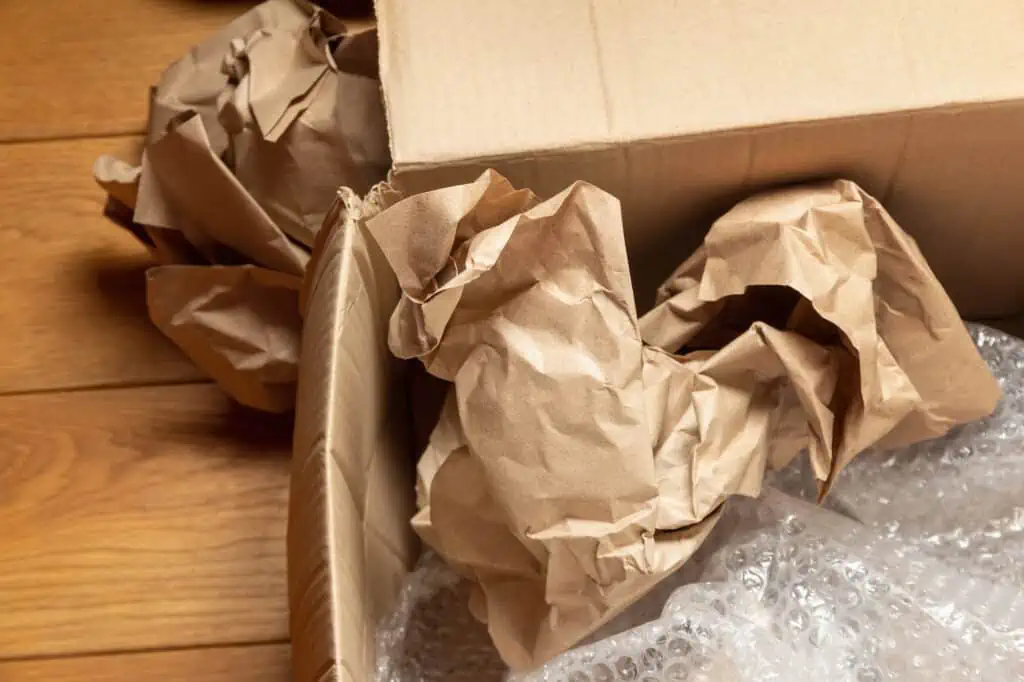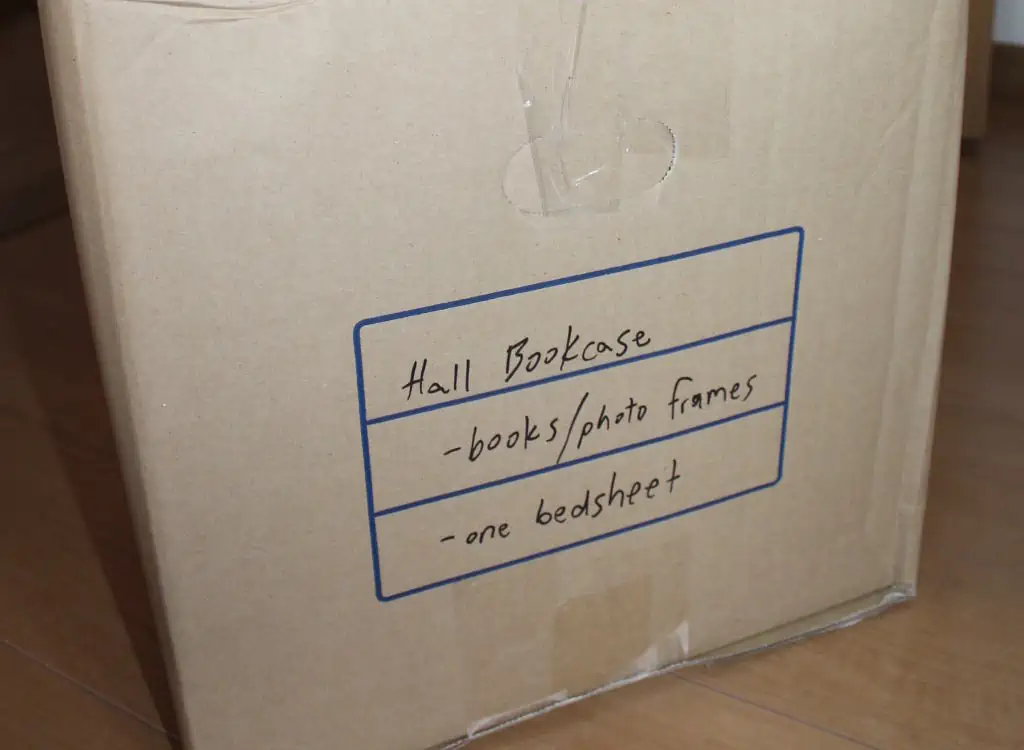You’ve spent years building up your home library, adding one book at a time until it’s filled with volumes you’ve read and then read again and — let’s be real here — others that are on your ever-growing to-be-read list (hello, tsundoku!).
If you’re moving, you’ll want your books to come with you. But how do you get them to your new home without damaging them (or your back) in the process?
Packing your books for a move may feel like a daunting task. But if you break it down and go step-by-step, it’ll go more smoothly than you think.
How To Prep Your Books Before You Pack
Have movers? Lighten your load to save money
Let’s start with the most difficult task: as painful as it may be, it’s time to get into Marie Kondo mode and separate your library into the books you can’t live without, and the ones that’ll spark joy in a new reader’s hands.
Pruning your collection will not only reduce the load you move, but it’ll also reduce your moving costs — fewer boxes to move means lower fees, since your movers can work faster.
If you’re unsure of what to do with the books you’re leaving behind, I suggest donating them or selling them!
Donation
- Little Free Library is a non-profit organization with volunteer-led book exchange boxes around the world.
- Goodwill is a non-profit organization that provides educational, career-related, and community-based assistance to those who need it.
- Better World Books is an online bookseller that sells used and new books, and donates one book to match each sale.
Selling
- Half Price Books is a bookstore chain with more than 120 stores across the US.
- Powell’s Books is an independent bookseller in Oregon that sells books nationally through its website (and to select international destinations).
- Ziffit is an app that readers can use to sell books to them for cash.
Sort and label your books by shelf
Once you’ve got your ‘to keep’ list sorted, it’s time to label your books. Think of this step as a gift to future you; being meticulously organized will make unpacking your books in your new home a whole lot easier.
Make a rough sketch of your bookshelves or storage units and number each shelf. On a Post-it note, write the number assigned to the shelf that a book came from. Stick the note to the inside front cover (or first page) to keep it secure — you don’t want it getting nudged and falling off.
Keep that sketch safe so you’ll know exactly where each book goes when you unpack.
See prices for local moving labor. Read real customer reviews. Easily book your help online.
Hardcore collector? Make an inventory
Catalog your books to keep track of which ones made the cut. You can use your phone’s notes app to make a simple list of your library and log the title of each book and its author. Alphabetize it (either by title or author) to make it easier to cross-reference the list with the books.
To be extra sure nothing’s missing when you unpack, use the app’s checklist function instead of making a simple list. This way, you can check each book off the list when you take it out of the box and put it on the shelves.
How To Pack Your Books
Gather essential book moving gear
Keep your basic packing supplies at hand to make the process faster.
- Boxes (more on this below)
- Packing tape
- Marker
- Acid-free packing paper (for leather-bound, rarer, or delicate books)
- Tissue paper
- Silica gel to keep the books free from moisture
Gather dry boxes and wheels
You know when you’re holding a book in your hand, feeling its heft, excited about the world inside it? Now multiply that by dozens or hundreds of books, and you’ll quickly realize it’s less exciting when it comes to moving your books.
“Don’t use newspapers [to pack books], as the ink can smudge onto the covers or fore-edges and damage the[m].”
Pack as many books as possible in something that has wheels, such as a suitcase. For the rest, find smaller cardboard or plastic bins that won’t be too heavy to lift once you add the weight of the books to them.
Make sure any cardboard boxes you use are dry so that moisture doesn’t seep into your books and ruin them.
How to strengthen cardboard boxes
If you’re using cardboard boxes, strengthen the bottom with packing tape so that it doesn’t buckle under the weight of the books. You can tape the box in an H shape so that all openings are tightly sealed. Don’t forget to use double tape for added strength!
Try to find a table on which you can put the boxes while you’re filling them to avoid bending repeatedly. It’ll also be easier to pick up a full box from the table than the floor when it’s time to move it. Your back will thank you!
Always pack your books flat
Sort your books by size and group books with similar heights and widths together. You want to lay them flat in the boxes, building up stacks side-by-side. Don’t fill the boxes with the spines facing either up or down.
Place the heavier books at the bottom of the box and go lighter as you go up the stack. Try to distribute the weight evenly among the boxes to avoid ending up with some boxes that are much heavier than others.
Fill in the damage-causing gaps in your boxes
While it may seem like no big deal to have some space in the box, any gaps between the books will give the covers wiggle room to move and potentially damage the pages. Stuff these gaps with packing paper to reduce the space between books and protect them from getting damaged.
Note: Don’t use newspapers as the ink can smudge onto the covers or fore-edges and damage the books.
If you’re expecting rain or moving to or from somewhere humid, add some silica gel packets to the boxes (or suitcases) to keep your books dry.
Label the boxes
Once you’ve packed, protected, and sealed the boxes, label them — a simple ‘books’ is good enough. This will save the movers time as they’ll know, at a glance, that the box is heavy and needs to be placed at the bottom of the truck.
To save yourself time while unpacking, label the box with the room the books will live in at your new home.
How To Move Your Books
Consider transporting them yourself
I get it — books are precious, and you might feel uneasy entrusting someone else with their care. If you have the option, you could move the boxes yourself instead of loading them into the moving truck to give yourself peace of mind.
If you have too many books to transport yourself, pack the ones you’re most attached to in one box (or two) and bring those with you while the rest go with the movers.
See prices for local moving labor. Read real customer reviews. Easily book your help online.
Hire movers
If you do have movers, just make sure to let them know you may have some particularly heavy boxes, or if there are any boxes you consider especially special to you!
Think about how they’ll be stored during the move
Your books may spend many days in the moving truck, and they need some TLC to come out of the boxes in good condition. Environments that are 70 degrees or lower and have humidity levels of 40 to 50% are the optimal storage conditions — both while moving and in your home or a storage unit. Be sure to let the moving company know what you need at the time of booking a moving truck.
“Pruning your collection will not only reduce the load you move, it’ll also reduce your moving costs — fewer boxes to move means lower fees, since your movers can work faster.”
Direct sunlight and dust can both damage books as well. Make sure you’ve sealed the boxes properly to prevent dust from sneaking in through any small openings. Avoid using boxes that have handle holes for carrying — you’re sending an open invitation to dust and sunlight to enter.
Load them on the moving truck correctly
Books are among the heavier items you’ll be moving, so load the boxes first into the moving truck and place them in the middle.
Also, keep them as close to the floor of the truck as possible — preferably on the floor, and not stacked above other boxes. This way, the boxes won’t tip over during transport and damage other boxes (or the books themselves) while on the move.
Knowing that you’ve taken care to protect and pack your books means you’ll have one less thing to worry about during the moving process. When you’ve unpacked, curl up on the couch with a good book in your new home — you’ve earned it!







